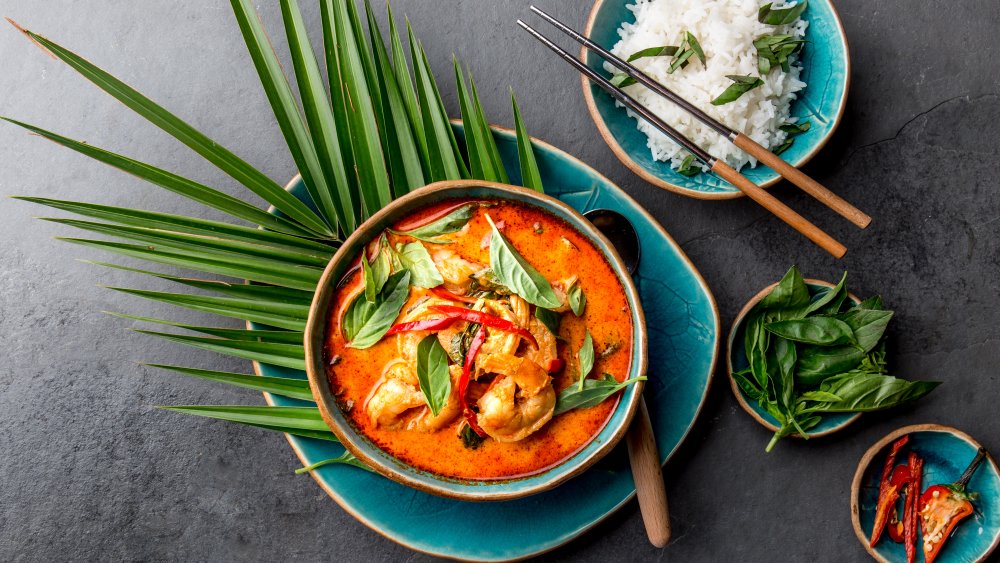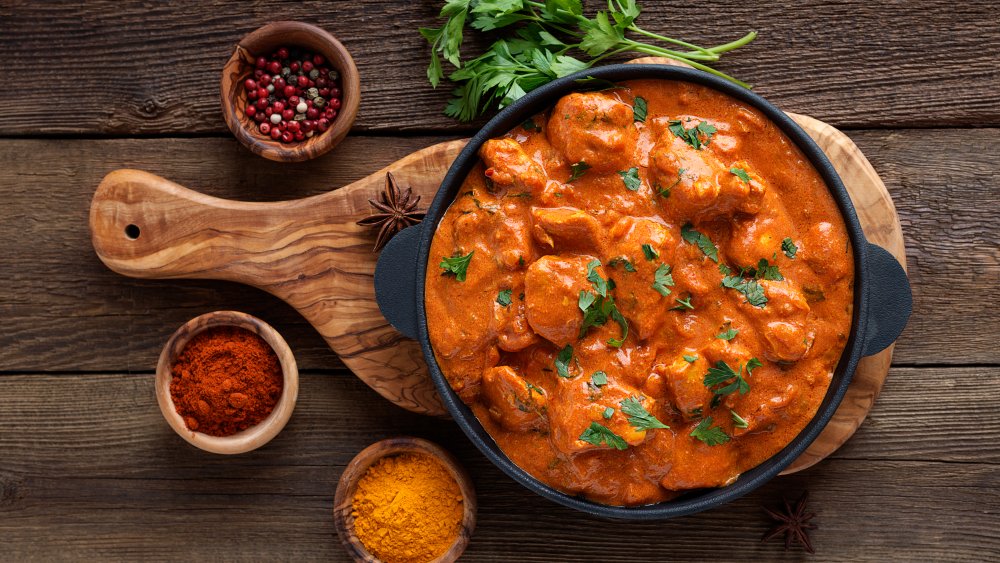Here's What You Can Do To Fix Runny Curry
A key element to any successful curry dish is having a sauce that is not only complex and flavorful, but rich in consistency as well. If you've ever tried to replicate your favorite Thai or Indian restaurant curry at home and ended up with a watery and unsatisfying knockoff, know that there are ways to fix that.
According to Liana Green of Liana's Kitchen, a perfect curry sauce is thick enough to coat all of the ingredients in the dish, while still being thin enough to spill over the rice so you have something to dip your flatbread into. Zainab Jagot Ahmed points out that while you can cook down your sauce on the stovetop to achieve a thicker curry, the added cooking time will often result in soggy vegetables and overcooked proteins — nobody wants that. By doing some experimenting, Ahmed found that a few different simple, one-ingredient additions can get rid of those annoying puddles of water in your curry and help you create a rich, luscious consistency.
Use cornstarch, flour, yogurt, and other ingredients to thicken curry
If your favorite Indian curry recipe always seems to turn out watery, Ahmed advises adding some tomato puree while cooking process. Pureeing some cooked lentils and adding them to the sauce also works well, according to Green, and will complement Indian dishes. Greek yogurt, Ahmed points out, also works well for Indian curries and doesn't normally curdle. Add a little of this creamy thickening agent at a time until you reach the desired consistency.
For Chinese sauces and Thai curries, the classic thickening technique of mixing one tablespoon of cornstarch with two to three tablespoons of cold water, then adding the mixture to your curry and simmering will add thickness without altering the flavor. Green says you can use flour or a gluten-free alternative such as arrowroot, rice, or coconut flour in place of the cornstarch.
Like a slurry, a roux made with two tablespoons of fat (such as butter or lard) and with two tablespoons of flour for every cup of liquid in your curry will thicken your dish. Just be sure to cook the flour and fat together until there is no longer a raw flour taste before adding it to your curry, around five minutes.
Finally, if the flavors are compatible with your recipe, adding a few tablespoons of pureed raw unsalted peanuts, cashews, or almonds, or one to two tablespoons of smooth peanut butter to your curry is a great thickening technique. Green states that peanuts are a common ingredient in South and East Asian dishes, so they will add authentic flavor to Thai curries.

